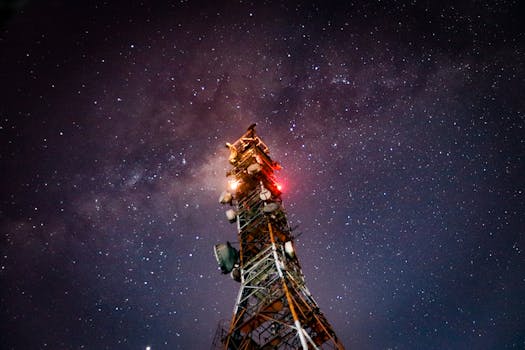Revolutionizing Global Connectivity: The Starlink Initiative

Revolutionizing Global Connectivity: The Starlink Initiative
Starlink, the focus keyword of our discussion, is a satellite constellation project launched by SpaceX, a private aerospace manufacturer and space transport services company founded by Elon Musk. The primary objective of Starlink is to provide high-speed, low-latency internet connectivity worldwide, particularly in areas where traditional fiber-optic and cellular networks are either non-existent or unreliable. This ambitious project promises to revolutionize global communication, bridging the digital divide and transforming the way we interact, live, and work.
The concept of satellite internet is not new, but previous attempts have been hindered by high latency, limited bandwidth, and exorbitant costs. Starlink, however, is poised to change this narrative with its cutting-edge technology and innovative approach. By launching a constellation of low-Earth orbit (LEO) satellites, Starlink aims to provide a fast, reliable, and affordable internet service that can reach even the most remote and underserved communities around the globe.
The Technology Behind Starlink
At the heart of the Starlink project is a complex network of LEO satellites, which are designed to orbit the Earth at an altitude of approximately 550 kilometers. Each satellite is equipped with advanced Hall effect thrusters, high-gain antennas, and sophisticated software that enables them to communicate with each other and with ground stations. The satellites use Ka- and Ku-band frequencies to transmit and receive data, providing a high-speed and low-latency connection that is comparable to, or even surpasses, traditional fiber-optic networks.
The Starlink system also features a unique phased array antenna technology, which allows the satellites to steer and shape their beams to target specific areas on the ground. This capability enables the satellites to provide a concentrated and high-powered signal, resulting in faster data transfer rates and improved network performance. Furthermore, the satellites are designed to be highly resilient and fault-tolerant, with built-in redundancy and failover mechanisms to ensure continuous service uptime.
Impact and Applications of Starlink
The potential impact of Starlink on global connectivity and communication is immense. By providing a reliable and affordable internet service, Starlink can help bridge the digital divide, enabling millions of people in underserved communities to access the internet and participate in the global digital economy. This, in turn, can have a transformative effect on education, healthcare, commerce, and other aspects of life in these communities.
Starlink can also have a significant impact on various industries, such as aviation, maritime, and rural connectivity. For instance, the high-speed and low-latency connectivity provided by Starlink can enable real-time communication and data transfer between aircraft, ships, and ground stations, enhancing safety, efficiency, and operational effectiveness. Additionally, Starlink can provide a cost-effective and reliable solution for rural broadband connectivity, enabling communities in remote areas to access high-speed internet and participate in the digital economy.
Challenges and Future Developments
While Starlink holds tremendous promise, there are also challenges and uncertainties associated with the project. One of the major concerns is the potential for space debris and the impact of a large constellation of satellites on the Earth’s orbit and environment. SpaceX has addressed these concerns by designing the satellites to deorbit and burn up in the atmosphere at the end of their life cycle, minimizing the risk of space debris and environmental harm.
Another challenge facing Starlink is the need for regulatory approvals and compliance with international laws and standards. SpaceX is working closely with regulatory bodies, such as the Federal Communications Commission (FCC), to ensure that the Starlink system meets all necessary requirements and guidelines. As the project continues to evolve, we can expect to see further developments and innovations, such as the integration of Starlink with other SpaceX projects, like the Starship program, and the expansion of the constellation to provide global coverage and connectivity.
